Holy Week meant searing days when I was a child. I remember going to a hilly grotto somewhere in Bulacan. As an adult, I skipped the hot grotto for a cool beach vacation. But then, marital bliss brought me back to the churches.
Being a walking enthusiast, I thought of organizing a Visita Iglesia on foot. The challenge was, it had to be at least seven churches. Reviewing a Manila map and my past itineraries, I connected not only seven but ten, even twelve churches, all in Manila.
Origins
Beginning in the Middle Ages, the church pilgrimage objective was to honor the Blessed Sacrament.. It also had an ulterior motive of counteracting the popular carnival. In Rome, pilgrims visited the seven basilicas and asked for penance. In the Philippines, the Augustinians introduced the practice in Intramuros where there were seven churches within walking distance. Years back, Intramuros reintroduced this religious walk but only two of the original churches remain intact. Filipinos pray at two Stations of the Cross in each of the seven churches or one Station of the Cross in each of the fourteen churches.
Manilakad version
· Binondo Church
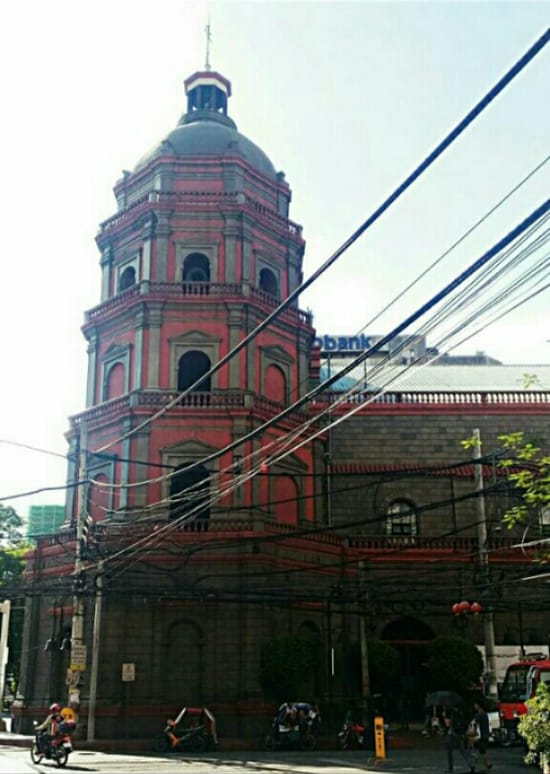
What better way to start a walk in the church where the first Filipino saint started as an altar boy? Saint Lorenzo Ruiz worked as a clerk and was falsely accused of killing a Spaniard. He joined the Dominicans to Okinawa where they were arrested, tortured, and killed for not renouncing their faith. He was beatified in 1981 in the first beatification outside the Vatican and was canonized in 1987. Andres Bonifacio and Gregoria de Jesus were also married here.

Founded by the Dominicans in 1596, Our Lady of the Most Holy Rosary, now the Minor Basilica and National Shrine of San Lorenzo Ruiz, was destroyed during the British and Japanese Occupation. Only its octagonal belfry, shaped like a pagoda, survived. After three phases of reconstruction, the basilica was completely restored in 1984.

· Sta. Cruz Church

Built by the Jesuits in 1619, Our Lady of Pilar, now the Archdiocesan Shrine of Blessed Sacrament, was completely destroyed in the Battle of Manila. This church is also historic because this is the place where the British turned over the city of Manila to Governor Simon de Anda after a short occupation. This shrine has the distinction of having St. Ezequiel Moreno as a former parish priest.
· Quiapo Church

Cross over to Carriedo St. via Avenida until you reach Quiapo Church.. You will be greeted by the statue of St. John the Baptist who is the original dedication to the parish. Founded by the Franciscans in 1588, it was declared the Minor Basilica of the Black Nazarene in 1988. The Black Nazarene was carved by a Mexican artist from ebony and brought in a Spanish galleon in 1767, The Friday novena and the annual procession attract throngs of people.

In 1933, National Artist Juan Nakpil designed the church in Mexican baroque and added a church dome and a second belfry. In 1984, another National Artist, Jose Maria Zaragoza of Sto. Domingo fame, enlarged the church and changed the design of the lateral walls.
· Holy Face
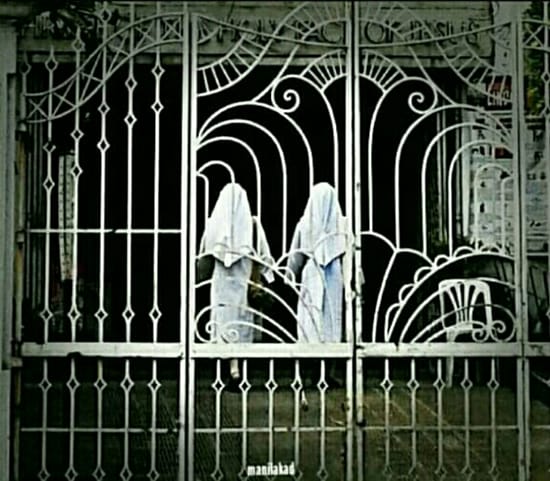
Pass through “Ilalim ng Tulay,” known for native handicraft, and a bit of the Muslim Quarter before you get to Hidalgo Street, once-upon-a-time the most beutiful street in Manila. Tucked in between the decrepit mansions is Holy Face. The Holy Face of Jesus of Perpetual Adoration was founded by Mary Therese Vicente, daughter of famous religious sculptor, Maximo Vicente. She is a true-blue Quiapense (native of Quiapo) and was a former Discalced Carmelite.
· San Sebastian
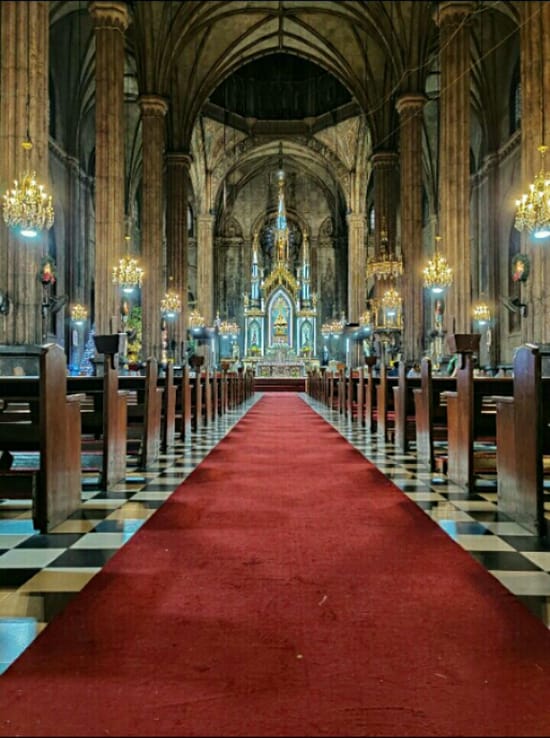
At the end of Hidalgo is San Sebastian, the only church made of steel in the Philippines and perhaps in Asia. Completed in 1891, this Minor Basilica was designated National Historical Landmark in 1973 and National Cultural Treasure in 2011. Architect Genario Palacios wanted to build a church which was fire and earthquake resistant. It was inspired by Burgos Cathedral in Spain and incorporates Earthquake Baroque with Neo-Gothic style..
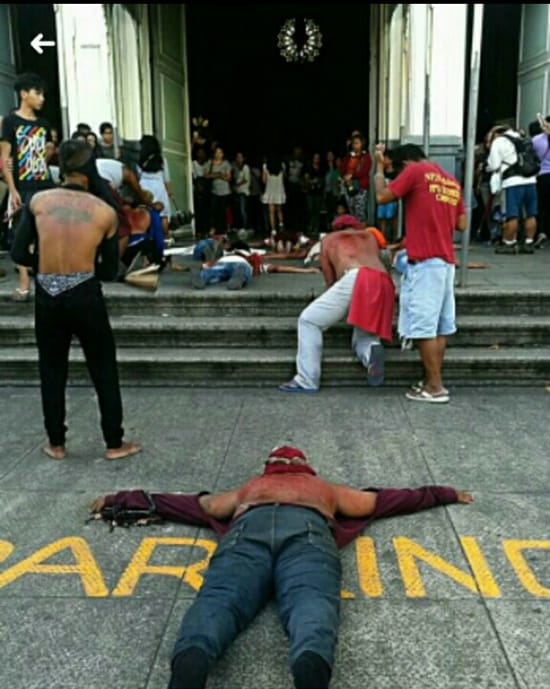
The prefabricated Belgian steel was transported in eight shipments. Stained glass came from Germany. On top of the altar are trompe l’oeil murals of Carmelite and Recollect Saints. Local artisans painted the steel columns, walls and ceilings so that they will look like marble and jasper. It houses the first image of Our Lady of Mt. Carmel which survived many disasters but not from thieves who stole its ivory head in 1975. The basilica is currently undergoing massive restoration to stave off rust and corrosion.
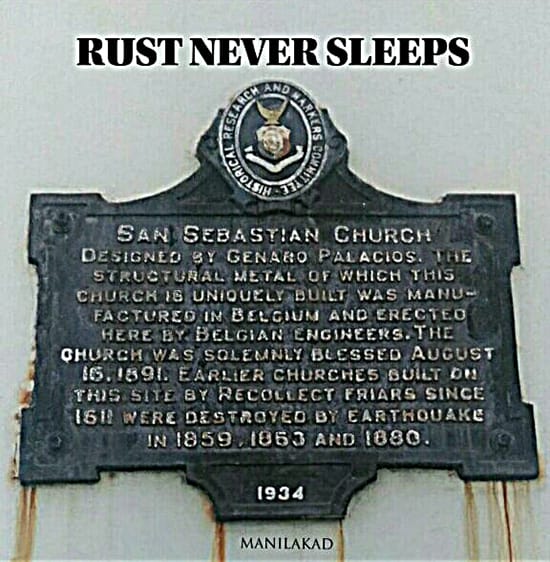
· Loreto
Trek down to Bustillos where you will find one of the two Twin Churches of Sampaloc. The Archdiocesan Shrine of Our Lady of Loreto was built by the Franciscans in 1613. It was destroyed in the Battle of Manila and was restored in 1958. In 1975, a bronze sculpture was done by Eduardo Castrillo.
· St. Anthony of Padua
This shrine was originally dedicated to Our Lady of Pilgrims but when it was destroyed in the Battle of Manila and restored in 1947, it was dedicated to Saint Anthony de Padua in honor of the San Francisco Church which was destroyed in Intramuros. It is administered by the Venerable Third Order of the Francicans.
· San Beda
Walk back to Legarda and turn left to Mendiola where you will find one of Manila’s “secrets.” The Abbey of Our Lady of Montserrat was built by George Asp in 1904 with a Neo-Gothic exterior and a Neo-Baroque interior. Spanish artist Don Lesmes Lopez and Brother Salvador lberich did the paintings. A bronze entrance door was done by Eduardo Castrillo. Dedicated to Santo Nino de Praga, this church is one of the most beautiful churches in Manila. It is an oasis in busy Manila. Don’t forget to get your Benedictine medal at the religious store.
· St. Jude
Go past Holy Spirit and Presidential Guards until you reach the Archdiocesan Shrine of St. Jude. This is a Chinese parish which is dedicated to St. Jude Thaddeus. The Thursday novena, which started in 1959, is very popular with students, reviewees, and people with seemingly hopeless problems. It is run by the Society of the Divine Word.
· San Miguela
If security is not too tight, you may walk along J.P. Laurel up to San Miguel Church. Take note that you can not take photos of Malacanang while walking. There is a quaint ancestral home turned into a Spanish Restaurant called Casa Roces if you want to have a quick merienda.
This church, which is located in the former San Miguel brewery, is dedicated to Saint Michael, Saint Gabriel, and Saint Raphael. It is popular with adults who need to be confirmed before getting married. While the Manila Cathedral was being rebuilt from 1946 to 1958, San Miguel Church served as proto-Cathedral. Ferdinand and Imelda Marcos were also married in the church.
The road to penance is part contrition, part carnival. Most people just walk and pray solemnly. Some take to the extreme. Flagellants whip their backs and splash blood along the way. The line prostrates in front of the churches. No matter how pilgrims express their piety doesn’t matter. What matters is their relationship with God. What really matters is their everlasting faith.
JP Ordona (Manilakad) leads Manilakad walks in Intramuros, Binondo, Quiapo, and more. In between, he writes, climbs, dives, and more. Let him guide you to several walking destinations in Manila. Manilakad (JP Ordona) can be reached on Facebook Messenger or through text (0916) 3597888.
